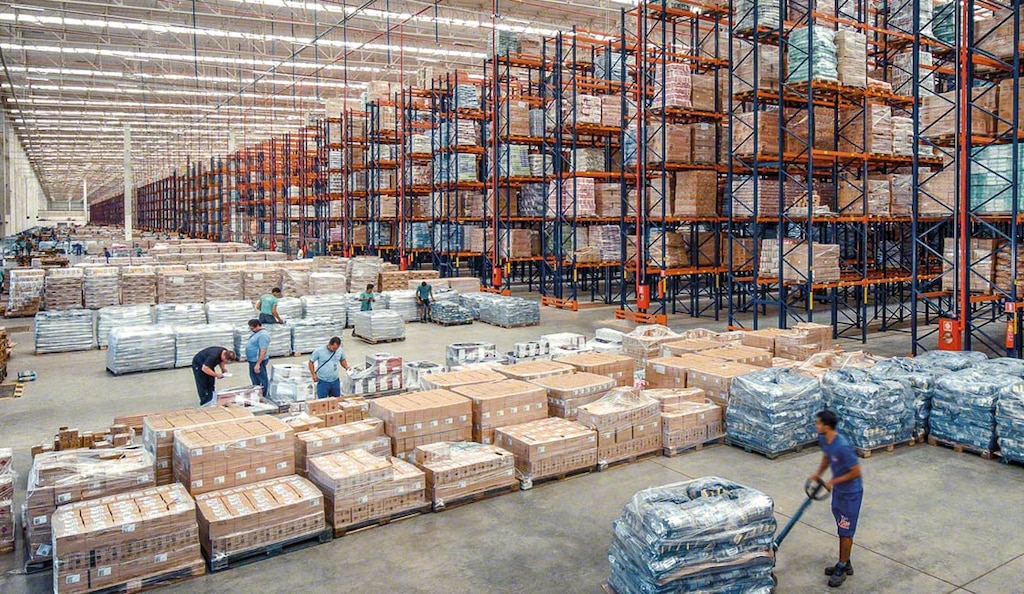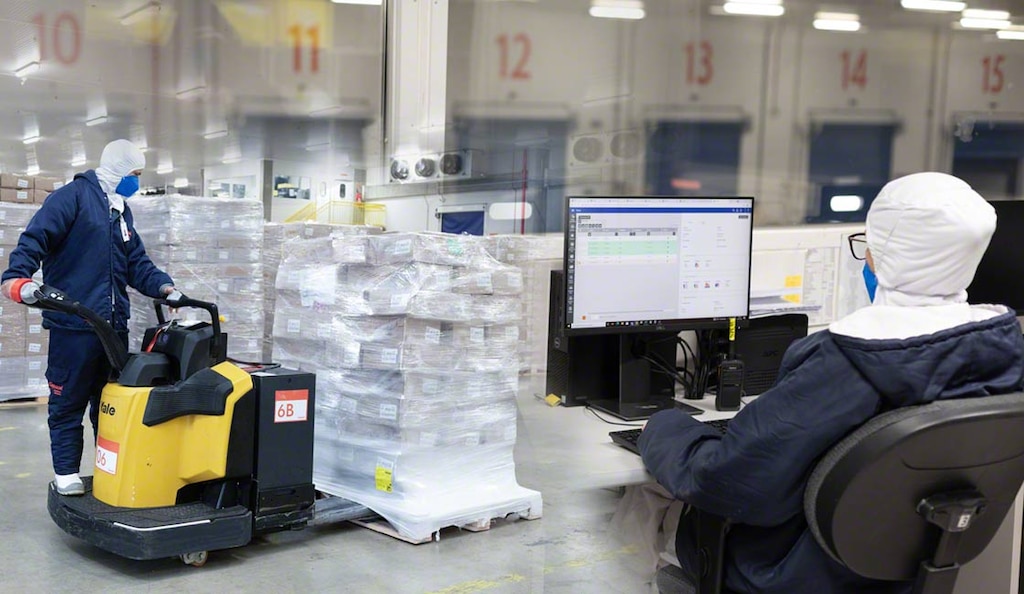
Inbound logistics: what’s it all about?
Inbound logistics encompasses processes such as product procurement, goods receipt, stock identification, and the storage of these materials in the corresponding system.
To perform inbound logistics efficiently and achieve a more competitive supply chain, companies need to automate their warehouse management as well as movements of goods.
What is inbound logistics?
Inbound logistics is a supply chain operation tasked with ensuring that a company is supplied with the products or services it needs to do business. Directly related to supply-chain procurement, inbound logistics includes the processes of product acquisition, goods receipt, storage, and stock management.
Efficiency in inbound logistics is of the utmost importance: this phase will make or break your company’s supply chain. Without the proper procurement, receipt, and storage of the materials needed to carry out the business activity (production and/or sales), it’s impossible for the company to begin the manufacturing process or to market its products.
The main objective of inbound logistics is to guarantee that the organization has all the essential materials to run the business well. For effective inbound logistics, companies need to forecast demand, determine how they will receive their supplies, organize product flows, and, particularly, manage goods receipt without errors.
Differences between inbound and outbound logistics
Although the two operations are similar, the main difference between inbound logistics and outbound logistics is that the first deals with supply, while the second satisfies customer demand. These are the primary differences:
- Raw material or semi-finished goods vs. finished product. While inbound logistics is usually charged with ensuring the procurement of products or resources, outbound logistics generally refers to the distribution of finished products to distributors, retailers, or end consumers.
- Purchase vs. sale. Inbound logistics manages the acquisition of products, while outbound logistics markets them. The operations themselves are different, but what really distinguishes these two types of exchanges is the process behind them: the company's communication with its suppliers (product sourcing) is different from that with its logistics providers or end customers (sales or distribution to retailers).
- Receiving vs. shipping. Purely logistical, these are two of the most crucial operations in the supply chain. Linked to inbound logistics, the receiving process manages the transportation fleet, goods unloading, product labeling, and stock control. Shipping, related to outbound logistics, is in charge of consolidating orders and loading them onto the transportation vehicles based on their route and other factors. They are then delivered to distribution centers or directly to end customers.
Inbound and outbound logistics activity is normally organized in the staging area, adjacent to the loading docks. To streamline receiving and shipping, these processes are performed in alternate time slots.

Inbound logistics phases
Here’s a step-by-step look at the stages that make up inbound logistics:
- Supply flow management. This consists of deciding on and managing the product quantities you need as well as the frequency of procurement to ensure the availability of these goods whenever necessary.
- Procurement of stock. This refers to the purchase of the products required by the production and/or sales department. To purchase goods, you need to select a supplier taking into account factors such as price, quality, delivery date, payment terms, etc.
- Transportation planning. Planning for the arrival of goods is paramount for preventing bottlenecks at your warehouse docks. Everyone involved in this stage should be aware of expected orders and their estimated time of arrival.
- Unloading and receipt of material. This relates to the unloading of goods from the trucks and their movement to the receiving or consolidation area. It’s critical to make sure that the products you receive match those you ordered. The package is also checked in this phase to ensure that it is in perfect condition.
- Choice of unit load. Once the goods have been verified and have undergone quality control, they are placed on/in the appropriate unit load — pallets, boxes, or containers — which will be used to store, transport, and handle the products.
- Product labeling and consolidation. All information relating to the goods received needs to be recorded in order to add the new products to the existing stock in the system, thus updating the inventory status.
- Storage in the ideal system. Goods that have been labeled and are ready to be stored are moved to the storage system best adapted to their characteristics. The products remain there until they are required in the next stage of the supply chain.
In the inbound logistics phase, all operations need to be performed in the shortest time possible, minimizing errors to facilitate the rest of the logistics processes.
How to optimize inbound logistics
Businesses are increasingly aware of the fact that efficient inbound logistics has a positive effect on the rest of the operations in the supply chain. Coordination between all departments and processes involved in inbound logistics is a must in order for the company as a whole to work like a well-oiled machine.
Digitization of the supply chain could be a solution for maximizing efficiency in inbound logistics. The goal of the smart supply chain is to automate management of a company’s documentation and of the organization of its procedures and workflows, among other objectives.
With a warehouse management system (WMS) such as Easy WMS from Interlake Mecalux, companies can benefit from effective, digitized inbound logistics. Communicating continuously with the ERP system, the WMS is designed to automatically issue purchase orders to suppliers, thus replenishing goods before reaching the minimum stock level established. Easy WMS also collects all the information contained in the advance shipping notice (ASN) to preassign a receiving buffer, recording the products scheduled to enter the warehouse before physically receiving them.
Easy WMS also features the Yard Management System (YMS) module, which supervises movements of vehicles in the yard, at the docks, in the parking lot, and at the warehouse access control points. This module minimizes bottlenecks at the loading docks.

Digitization of inbound logistics
Digitizing inbound logistics is key for the proper functioning of your entire supply chain. Controlling the quantities and frequency of procurement, managing supply forecasting, and achieving smooth communication with suppliers represent inbound logistics challenges that can be optimized through digitization.
At Interlake Mecalux, we’re specialists in designing the logistics solution that best matches your needs. In the case of inbound logistics, Easy WMS manages your business’s supply to make sure your flows are continuous, controlled, and error-free. For more information on how to improve processes in your warehouse, be sure to get in touch.
